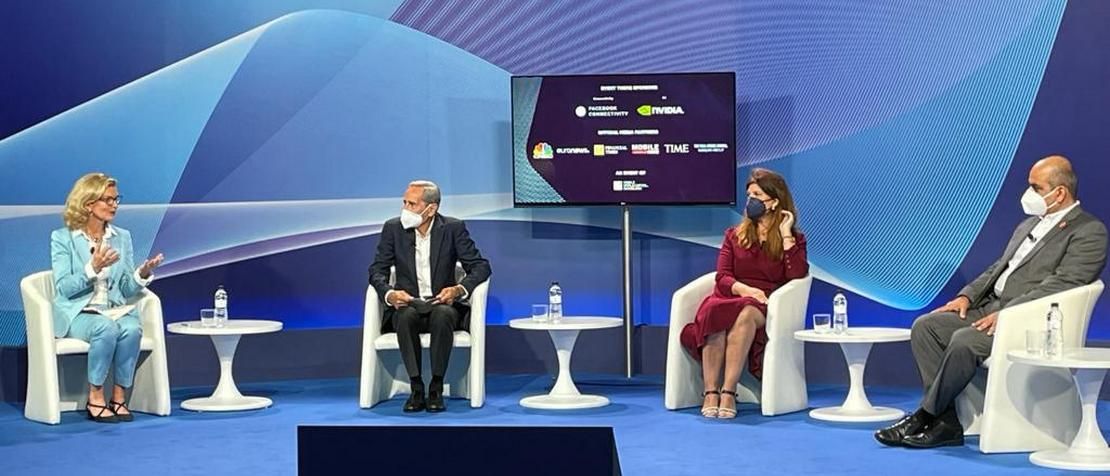
Mobile World Congress 2021: Back together in Barcelona
As I prepared to attend the GSMA Mobile World Congress (MWC) late last month, I realised I’d practically forgotten how to pack. This major industry event, taking place in Barcelona, Spain, would be my first official trip in nearly a year and a half.
I was a regular traveller and a master of packing a small carry-on for a week. But I had clearly lost my knack. What did I need to bring?
Does anyone still use business cards? I hadn’t for at least 15 months. Plug adapters – check; band-aids – check; walking shoes – check. Not to mention hand sanitizer, protective masks, and a PCR test.
After a year of virtual meetings, I was filled with excitement – looking forward to getting back to business, back to Barcelona, and most importantly, back together with colleagues.
MWC’s cancellation in 2020 was one of the many shockwaves the pandemic sent our way. So, the invitation to participate physically in a hybrid format this year came as welcome news. I was eager to see how GSMA – the GSM Association, representing the worldwide mobile communications industry – had planned this large-scale event amid the world’s “new normal.”
As I noticed immediately, the organizers went the extra mile with pandemic measures for our safety. The official event app contained our digital badge (no more paper badges). The digital badge was only activated once a negative COVID test was uploaded and the daily self health-check was completed. The badge would let me through the doors of the Fira de Barcelona conference centre, which also housed an onsite COVID testing centre. Temperature scans were done on entry, social distancing requirements were enforced consistently, and masks were obligatory except while speaking at a session.
Making inclusion the norm
This year’s conference theme was Connected Impact. This really said it all, putting the spotlight on connectivity – and by extension, the digital divide – and the impact these have on our lives, our societies, and the environment.
While future tech trends (5G in particular) remained a big focus, COVID shifted greater attention to persistent connectivity challenges in both the developed and the developing world. From the opening keynotes that called for a new digital deal, a reset, or a reinvention, congress participants rallied behind the need to build a trusted digital ecosystem for all.
I was delighted to join the panel on “Bridging the Digital Gap”, where I noted the need to go beyond infrastructure and think about users. This means addressing demand-side issues – like giving communities digital skills, affordability, accessibility, relevant content, languages, gender sensitivity, and online safety.
The digital divide amounts to the new face of global inequality. During a ministerial session on “Making Inclusion the New Normal”, I noted how the current cost of exclusion drains more from our economies than the cost to connect everyone.
Post-pandemic, we must stand up for a better digital future. Inclusive partnership must become our baseline. Besides being our end goal, inclusivity must define the way we reach that goal. This implies working together to expand our reach and address the needs of disadvantaged communities, such as people in rural and remote areas, women, persons with disabilities, and other minority groups.
With the launch of the Partner2Connect Digital Coalition, which I announced in Barcelona, the International Telecommunication Union (ITU) looks forward to joining forces with others to create an inclusive new normal. This new multi-stakeholder alliance aims to foster meaningful connectivity and digital transformation in the hardest-to-connect communities, including in least developed countries, landlocked developing countries, and small island developing states.
Everyone – regardless of geographical location, income level, or any other factor – must be able to tap into digital technologies. But getting there will take all of us working hand in hand.
Incomparable interactions
Between conference sessions, I had bilateral meetings with ITU Member States and private sector members. This gave me the chance to present some of our ongoing initiatives in the Telecommunication Development Bureau as well as our preparations for the upcoming World Telecommunication Development Conference.
While I’m grateful for how virtual platforms have let us keep connecting with others, the kind of connection you feel when sitting down face to face with another human being – even with masks on – cannot be compared.
This was a much more intimate MWC, but it was as content rich as ever. Big thanks are due to GSMA and the Government of Spain for their enormous undertaking to make the conference happen in safe conditions.
Let’s join forces to achieve a Connected Impact for all.
